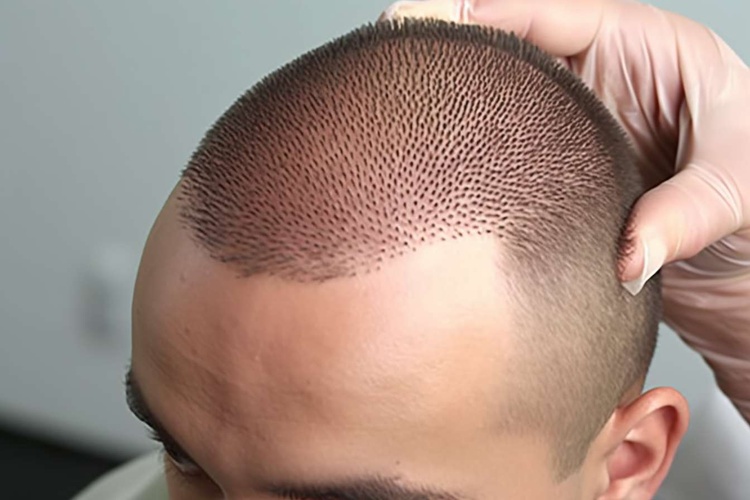Liposuction Demystified: Surgical Fat Removal Guide
Explore how liposuction reshapes stubborn fat deposits that resist diet and exercise. This comprehensive guide explains common techniques—including ultrasound-assisted options—who makes a good candidate, typical treatment areas, recovery expectations, and cost ranges to help you choose a safe cosmetic fat removal path.

Liposuction is a popular cosmetic operation designed to remove persistent pockets of fat and refine body contours. It is not a weight-loss procedure, but when performed by an experienced surgeon it can improve proportions and enhance the silhouette. This guide breaks down the main approaches, safety measures, ideal candidates, commonly treated zones, what to expect during recovery, and typical costs so you can make an informed decision.
Ultrasound-Assisted Liposuction Technologies
Ultrasound-assisted liposuction (UAL) uses focused sound waves to soften and disrupt fat cells before they are suctioned away. The ultrasonic energy helps emulsify fatty tissue, which can allow smoother aspiration and reduce trauma to nearby structures. This method can be especially useful in areas where fat is fibrous or dense—such as the male chest or the upper back—where traditional suction may struggle to produce an even result.
Different UAL devices exist, but their shared advantage is better fat breakdown that can permit gentler extraction and potentially finer contouring. Surgeons often select UAL for challenging regions or when the goal is to minimize manual force while maximizing precision.
Other Common Liposuction Methods
Several liposuction techniques are available, each with unique instruments and benefits:
- Traditional liposuction (suction-assisted lipectomy): This classic approach relies on manual suction via a cannula to remove fat. It remains a reliable and widely used option for many patients.
- Power-assisted liposuction (PAL): A motorized cannula vibrates to loosen and extract fat more efficiently. PAL can reduce surgeon fatigue and sometimes shortens operative time.
- Laser-assisted liposuction: Laser energy breaks down fat cells and may provide some degree of skin tightening in treated areas.
Which technique is best depends on the treatment site, the amount and character of the fat, skin elasticity, and the surgeon’s training and preference.
Medical Considerations and Safety Protocols
A thorough preoperative evaluation is essential before liposuction. Good candidates are typically in overall good health, maintain a stable weight, and are reasonably close to their ideal body mass—commonly within about 30% of their target weight. Realistic expectations about achievable results are vital.
Pre-surgery steps often include a medical history review, medication and supplement adjustments, and in some cases basic lab testing. Quitting smoking before and after surgery is strongly recommended to support healing and reduce complications.
Anesthesia choices vary: small, localized treatments may be performed under local anesthesia with sedation, while extensive cases frequently require general anesthesia. As with any surgery, liposuction has risks such as bleeding, infection, contour irregularities, numbness, fluid collections (seromas), and anesthesia-related events. Selecting a board-certified plastic surgeon and carefully following pre- and postoperative directions will lower those risks.
Body Areas Suitable for Treatment
Liposuction can address many regions where fat gathers. Typical treatment zones include:
- Abdomen and waist
- Hips and flanks (“love handles”)
- Thighs and buttocks
- Upper arms
- Chin and neck
- Back and bra line
Surgeons can treat one or multiple areas in a single session, based on safety guidelines, total volume to be removed, and the patient’s overall health.
Understanding Results and Recovery
You may notice initial contour changes soon after surgery, but swelling and bruising can hide final results for a time. Most postoperative swelling decreases over weeks to months, with the ultimate contour appearing between three and six months as tissues settle.
Fat cells that are removed do not return; however, remaining fat cells can enlarge with weight gain and change the surgical outcome. Long-term success depends on maintaining a stable weight through balanced diet and regular exercise.
Recovery varies by technique and the extent of treatment. Many patients resume light work within one to two weeks, while strenuous activities should be postponed for several weeks. Complete healing may take several months depending on the treated area and individual factors. Surgeons typically recommend wearing compression garments in the early recovery phase to reduce swelling, support tissues, and help the skin adapt to new contours.
Typical Techniques, Recovery, and Cost Ranges
| Provider | Technique Offered | Average Recovery Time | Typical Cost Range |
|---|---|---|---|
| Traditional Liposuction | Manual suction via cannula | 2-4 weeks | $3,000-$8,000 |
| Power-Assisted Lipo | Mechanized vibrating cannula | 1-3 weeks | $4,000-$9,000 |
| Ultrasound-Assisted | UAL devices to emulsify fat | 2-4 weeks | $5,000-$12,000 |
| Laser-Assisted | Laser energy to disrupt fat | 1-2 weeks | $5,500-$12,500 |
Prices, rates, or cost estimates mentioned in this article are based on the latest available information but may change over time. Independent research is advised before making financial decisions.
Choosing the right procedure requires weighing desired outcomes, skin elasticity, general health, and how much recovery time you can accommodate. An in-person consultation with a qualified, credentialed plastic surgeon will help determine the most suitable technique for your anatomy and goals.
This article is for informational purposes only and should not be considered medical advice. Please consult a qualified healthcare professional for personalized guidance and treatment.





